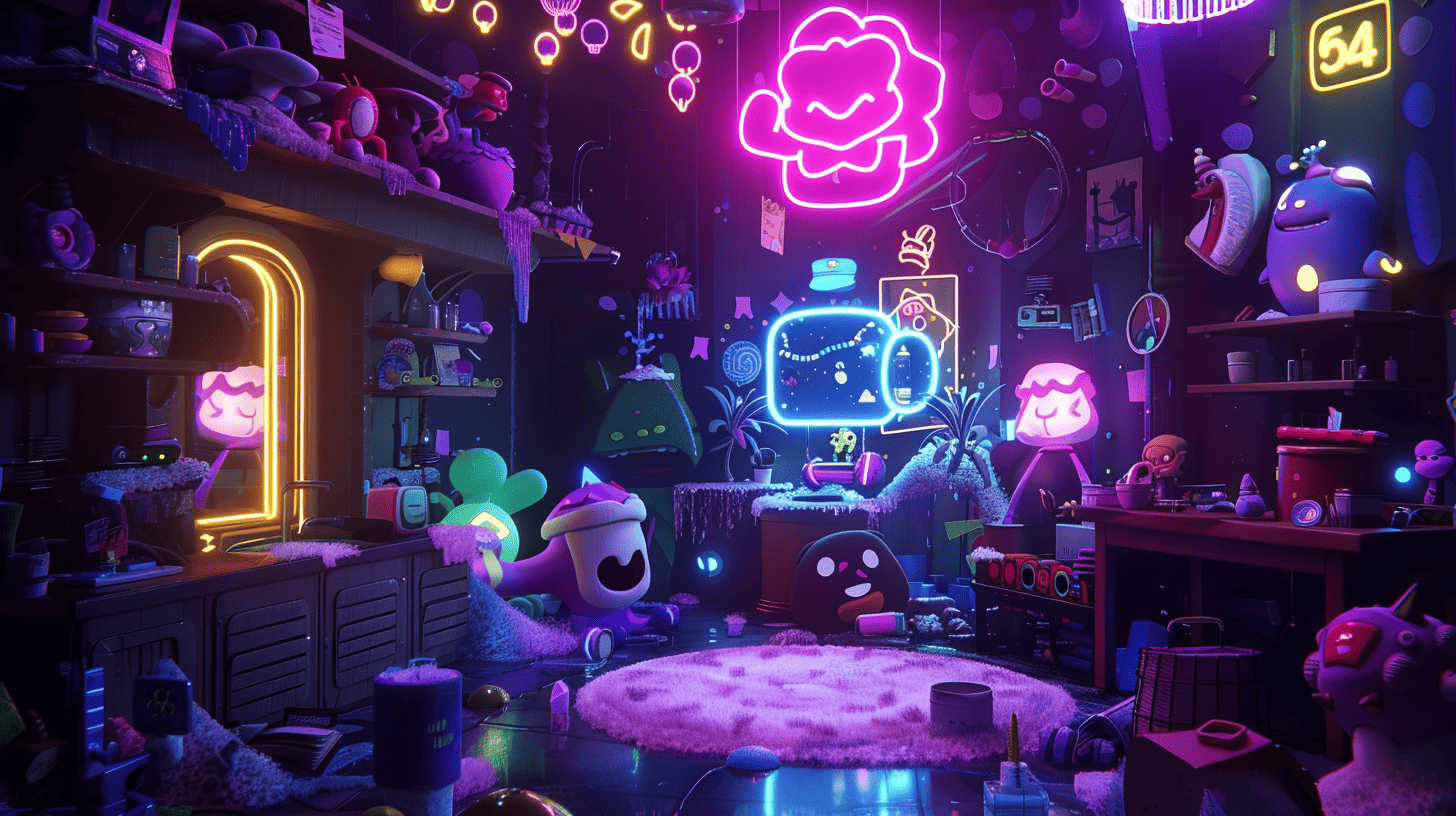AI Behind the Scenes: How It Powers the New Generation of Crypto Games

AI Is Doing More Than You Think
AI isn't just about chatbots or fancy visuals. In crypto games, it runs deeper. It manages systems, balances economies, and shapes how you experience the game — without drawing attention to itself.
Most players don’t notice it. That’s the point. AI works behind the scenes to keep games fair, smooth, and worth your time. It tracks patterns, fixes problems, and keeps things moving — all without stopping the fun.
This isn’t about hype. It’s about function. If you’re playing tap-to-earn games or following Telegram-based crypto projects, you’re already inside AI-managed systems. You just might not see it.
In this article, you’ll see how AI fits into the background — powering logic, performance, and fairness in the next generation of crypto games.

Dynamic Game Logic: AI Keeps Things Running Smoothly
In crypto games, everything moves fast. Players tap non-stop. Rewards pile up. Balances shift every second. If something breaks, it breaks fast — and everyone feels it.
That’s where AI steps in.
AI tracks how players move through the game. If too many people reach the top level too quickly, it adjusts difficulty. If rewards start flooding the system, it slows them down. No updates needed. No waiting for patch notes. The game just adapts.
AI also fine-tunes pacing. It can decide when to throw in a harder challenge or when to let players rest. That keeps the game engaging without pushing people away.
This kind of adjustment used to take days — sometimes weeks. Now it happens in real time, quietly, without a team of devs behind it. For crypto games running on small teams and tight cycles, that makes a big difference.
AI doesn’t just make games smarter. It keeps them from falling apart.

AI in Player Behavior Analysis: What Keeps You Hooked
Crypto games live or die on player attention. If people get bored or confused, they leave — and they usually don’t come back.
AI helps stop that.
It watches how you play. Where you slow down. What you skip. How often you come back. Then it adjusts things to keep you interested. That could mean faster rewards, easier steps, or new tasks at just the right time.
For example, if a player keeps dropping off after level 3, AI can change what happens there — maybe reduce the grind or add a bonus. If someone taps constantly but never upgrades, the system can offer a tip or a time-limited deal.
It’s not manipulation. It’s adjustment. The goal is to keep the game fun — not frustrating or repetitive.
And since crypto games often have real money at stake, smart pacing matters more. AI makes sure players don’t burn out before they get hooked.

Back-End Automation: AI as the Invisible Developer
Crypto games need constant updates. New tasks, fresh content, more rewards. But most Web3 teams don’t have big budgets or huge dev teams.
AI fills that gap.
It can create quests, name items, adjust drop rates, and even design basic levels — all without human input. What used to take hours now takes seconds. That means less waiting between updates and more reasons for players to stay.
AI also helps with testing. It finds bugs, checks logic, and catches edge cases fast. No need to break the game to see what fails. The system runs the checks quietly in the background.
For developers, it’s like having an extra team member who never sleeps. For players, it means a game that stays fresh and works better.
This isn’t flashy. You won’t see it in-game. But it’s one reason the whole system keeps running.

Fairness & Anti-Cheat Systems: Quiet Defense in Real Time
Cheating ruins crypto games fast. Bots farm rewards. People create fake accounts. Exploits spread. And when real players notice, they leave.
AI helps stop this before it gets out of hand.
It tracks behavior across thousands of players. If someone taps nonstop 24/7 or makes moves that don’t make sense, the system notices. It flags suspicious patterns and can block, freeze, or warn — instantly.
This works especially well in Telegram-based games, where anti-cheat tools are limited. AI doesn’t need a huge interface or manual input. It just runs, watches, and reacts.
It also improves over time. Every flagged bot makes the system better at spotting the next one. And every false alarm helps reduce future mistakes.
Fairness keeps players around. AI makes sure the system stays fair — even when no one’s watching.

Economy Monitoring: AI Helps Keep Tokens Stable
A broken economy kills a crypto game fast. If token rewards get out of hand, players dump. If rewards feel unfair, they leave. AI helps prevent both.
It watches how tokens move — who earns, who spends, how fast, and where. If it sees inflation rising, it slows down drops. If players stop spending, it adjusts prices or adds incentives. All of this happens automatically.
In tap-to-earn games, timing matters. If too many users hit big payouts at once, the whole system tilts. AI spreads out rewards, fine-tunes earning rates, and keeps things steady — without needing a full redesign.
For developers, this means fewer crises. For players, it means a system that feels consistent — and less like a pump-and-dump.
AI doesn’t fix bad tokenomics. But it makes good ones more stable.

Adaptive Onboarding: Getting You in Fast — and Keeping You
Most players quit early. They open a game, tap a bit, get lost — and disappear. Crypto games lose users this way every day.
AI helps fix that.
It watches what new players do. If someone skips the tutorial, AI offers smaller tips later. If a player gets stuck on a screen for too long, it suggests a next step or gives a small bonus to move things along.
This keeps things moving without overwhelming the player.
AI can also group users by behavior. New users who act like long-term players? Show them advanced features early. People who hesitate? Keep it simple, one step at a time.
This kind of smart onboarding means fewer drop-offs, more engagement, and better retention. And in Web3, that matters — every player is also a potential holder, trader, or promoter.
AI gets them in faster. And gives them reasons to stay.

The Quiet Shift: AI Is Becoming a Core Game Layer
AI used to be a tool — something developers used on the side to make things easier. Now it’s becoming part of the game’s core.
It’s not just helping. It’s running things: logic, pacing, balance, behavior tracking, and real-time updates. In many crypto games, especially fast-moving ones on Telegram, AI isn’t just support. It’s infrastructure.
This shift isn’t obvious to players. They don’t see code or settings. But they feel it. The game reacts quicker. It makes more sense. It holds attention longer. That’s not luck — that’s AI doing its job quietly in the background.
More teams are starting to build this way — not just with AI plugged in, but with AI baked into the structure from day one.
Games that grow fast without breaking? Games that feel smooth from day one? They’re not guessing. They’re using AI under the hood.

Conclusion: The Best AI Is the One You Don’t Notice
AI in crypto games doesn’t need to show off. It doesn’t have to be the headline. When it works right, you don’t see it — but you feel the difference.
The game runs better. Rewards feel fair. Players stay longer. Updates happen faster. Bots get blocked quietly. And everything just works.
This isn’t the future. It’s already here — especially in tap-to-earn and Telegram-based games, where things move fast and resources are tight.
The smart teams aren’t asking if they should use AI. They’re already using it — deep in the system, where it matters most.
